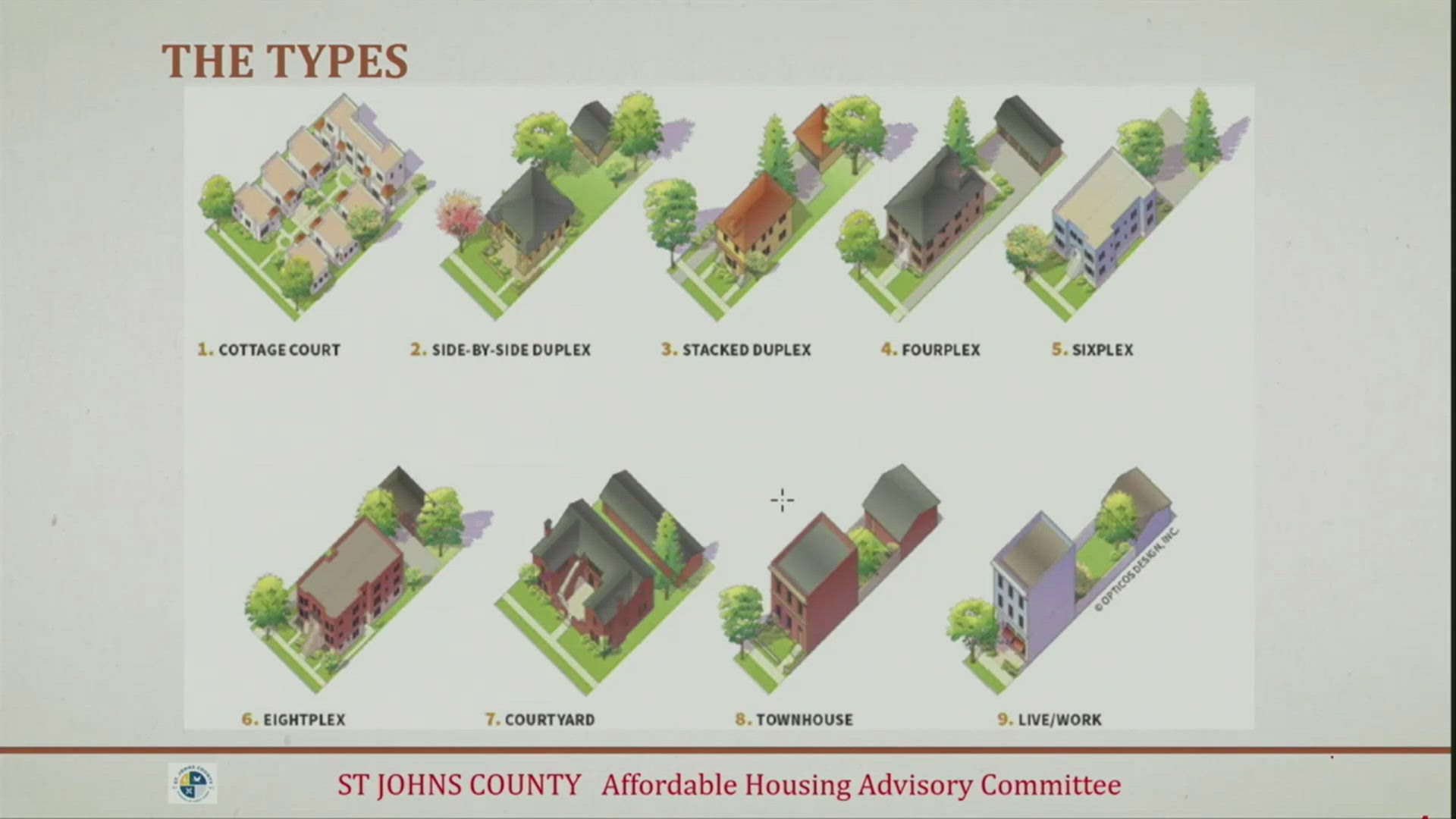ST. JOHNS COUNTY, Fla — When it comes to new homes that are getting approved for construction in St. Johns County, there are typically two kinds: single family homes or apartment complexes.
In its effort to encourage more affordable housing, county leadership is looking at a kind of home that would bridge the gap between the two. It's called the missing middle.
"So we’re talking about duplexes, triplexes, quads, garden apartments, small homes around a courtyard," award-winning St. Augustine architect Greg Burke said.
He presented the concept of the missing middle to St. Johns County commissioners this month. It’s a notion spanning the nation.
"Missing middle is actually a rebirth of the way we used to build prior to 1940," Burke said.
However, in some counties – such as St. Johns – zoning does not allow for this kind of middle housing with small homes.
"As zoning exists now, we’re all single family or we’re mid-rise apartments," Burke noted.
There is an exception if a developer presented an entire area called a planned unit development, or a PUD.
Over the last years or so in St. Johns County, many people who live in single family homes have fought against apartments being built nearby.
"Well, that’s what really missing middle will help do is not have those right next to you necessarily," Burke said.
Currently, the average price for a house in St. Johns County is $520,000, which is out of reach for many people in the middle class.
Burke explained that "missing middle" homes could help the middle class actually live in St. Johns County.
"The fact that you could, as a single person, even if you’re making $45,000 to $50,000 a year, you could still get into one of these units if they were price between $200,000 and $250,000," Burke said.
Burke says for St. Johns County to welcome the missing middle, there needs to be county leadership support, changing of county rules, and innovative developers.
Burke said there’s a common fear among some home owners that duplexes, triplexes and garden homes would lower property values of surrounding single family homes. However, he told First Coast News that is not true and it’s been proven to be untrue.

